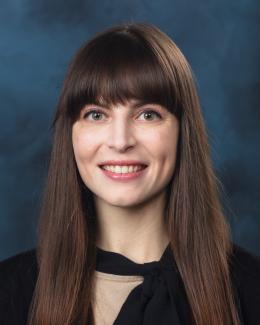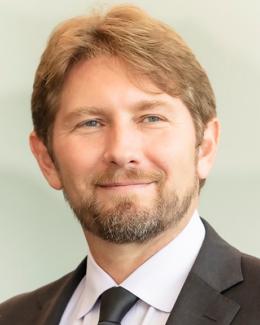On December 2, multiple members of the QSC’s leadership team visited the White House for a summit on the future of quantum information science. Credit: White House Office of Science and Technology Policy
Earlier this month, Quantum Science Center Director Travis Humble, Deputy Director Vivien Zapf and Workforce Development Lead Alexandra Boltasseva attended the National Quantum Initiative Centers Summit hosted by the White House Office of Science and Technology Policy.
The event’s purpose was to evaluate opportunities and challenges facing the five U.S. Department of Energy National Quantum Information Science Research Centers – including the QSC – and five National Science Foundation quantum institutes, all of which were established through the National Quantum Initiative Act, as well as two U.S. Department of Defense centers and one U.S. Intelligence Community center established through the National Defense Authorization Act.
Representatives from all 13 centers gave 5-minute presentations followed by Q&A sessions with members of the Executive Office of the President. They shared their centers’ missions and contributions to areas prioritized by the NQIA and NDAA – from achieving scientific breakthroughs and leading workforce development efforts to cultivating interactions with industry partners and fostering international collaborations.
During his remarks, Humble provided an overview of the QSC’s goals, which include discovering and developing new quantum materials, optimizing the performance of novel quantum algorithms, and implementing the next generation of quantum sensors. To date, the QSC’s progress toward these goals has enabled more efficient computer simulations and increasingly sophisticated experiments in both fundamental and applied science.
To continue this trajectory, Humble emphasized that the ongoing efforts that focus on growing the quantum information science workforce and addressing shared research challenges must remain key priorities for the QSC’s individual members, partner institutions, and for the broader QIS community.
“The meeting highlighted the resources and expertise that this new community of centers and institutions brings to the table,” Humble said. “By sharing expectations and anticipating obstacles, the group amplified the excitement surrounding QIS, which is a growing field that is cultivating an inclusive culture of science and engineering and has the potential to develop transformative technologies.”
Subsequent discussions focused on the current state of the eight Quantum Frontiers identified by OSTP’s National Quantum Coordination Office and the resources and expertise needed to facilitate additional advances.
Throughout the day, participants underscored the importance of ensuring equitable and early access to career paths in QIS. To this end, Boltasseva is passionate about recruiting and training a diverse array of students and professionals from many different research disciplines through avenues such as the QSC’s annual summer school.
“As a society, we took the first step toward creating a quantum culture by engaging in an open and vibrant conversation about making connections across the centers and leveraging our combined expertise to build new workforce pipelines for emerging technologies such as quantum systems and sensors,” Boltasseva said.
As the first major gathering of the centers’ leadership teams, the summit set a precedent for continued collaboration and coordination between institutions affiliated with government, industry and academia. These partnerships, many of which are already established, are designed to enable scientific accomplishments and practical applications in high-performance computing, national security and more.
“It was great to see the breadth of quantum research and the institutions from various funding streams that all fall under the umbrella of QIS,” Zapf said. “The roundtable discussions provided an unprecedented opportunity for the centers, funding agencies and OSTP representatives to address research challenges and ensure that the field as a whole is heading in the right direction.”
The QSC, a DOE National Quantum Information Science Research Center led by Oak Ridge National Laboratory, performs cutting-edge research at national laboratories, universities, and industry partners to overcome key roadblocks in quantum-state resilience, controllability, and ultimately the scalability of quantum technologies. QSC researchers are designing materials that enable topological quantum computing; implementing new quantum sensors to characterize topological states and detect dark matter; and designing quantum algorithms and simulations to provide a greater understanding of quantum materials, chemistry, and quantum field theories. These innovations enable the QSC to accelerate information processing, explore the previously unmeasurable, and better predict quantum performance across technologies. For more information, visit qscience.org.
UT-Battelle manages ORNL for DOE’s Office of Science, the single largest supporter of basic research in the physical sciences in the United States. DOE’s Office of Science is working to address some of the most pressing challenges of our time. For more information, visit https://energy.gov/science — Elizabeth Rosenthal




